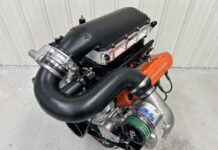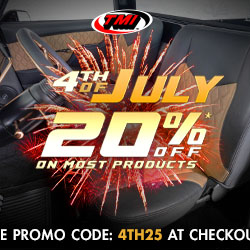By Nick Licata
One of the things I like about the muscle car hobby, and especially the Chevy market, is the massive amount of parts available that help contribute to the diversity in which our cars can be built. From Pro Street to Pro Touring and everything in between, the aftermarket provides virtually limitless possibilities to help spice up your ride exactly to your taste—and the flexibility to change directions mid-build adds another layer of versatility.
Back in the ’70s many of us started off with the family hand-me-down, which in many cases was a station wagon or a fullsize car; not always our first choice but it was likely free or gotten for cheap. Aftermarket parts were relatively limited at the time, so enhancing the car’s appearance typically began with a set of aftermarket, wider-than-stock wheels and tires to improve on the car’s family hauler vibe. We had to then jack up the rearend high enough to give it a cool rake, emulating the look of cars on the dragstrip while also preventing the fenders from grinding off the white letters of those 60-series Firestone Super Sport tires. With that done, the next issue was trying to remove the stench of that egg salad sandwich lingering in the original seat foam since seventh grade. Good times.
Today it’s not uncommon to special order a custom-sized rearend from the many performance rearend companies in the industry followed up with a set of custom offset wheels, then welding in mini-tubs to get those massively wide tires and wheels to fit within the fenders. Back in the ’70s only the hard-core drag racers had access to build shortened rearends. Very few Saturday night street racers had the means or the funds for such fabrication antics. Another option was cutting the fenders and incorporating fender flares. Those were hit and miss. If not performed by a reputable fabrication shop, chances are they came out looking totally crude and didn’t last long.
Not that long ago, 18-inch wheels were considered clownishly massive while today it’s common to see 20s tucked under the rear quarters of many popular muscle car from the ’60s. I, for one, didn’t see that coming but with the right stance, big rollers can look appropriate on a vintage muscle car.
Beyond the rear of your ride, nowadays there is a limitless amount of suspension components designed to adapt to just about any build style you desire—Pro Street, Pro Touring, Gasser, restomod, or Day Two restorations. It’s never been easier to build a project exactly to your specifications—a far cry from the early days when parts had to be fabricated if you wanted your car to stand out from every other muscle car in town.
When taking on a project, feel free to mix in just the right parts to achieve the build you’ve imagined in your head. Today it’s even possible to turn your mom’s used-up ’82 four-door Malibu wagon with faux spoke wheels and whitewall tires into a cool ride. It’s just an LS swap away from being a badass street machine. Bolt on the right set of wheels and tires and no one will ever know it’s the same car your mom used to drop you and your boys off at the local movie plex to take in Star Wars: Episode VI – Return of The Jedi.
Truth be told, I’m a total G-body wagon fan—luggage rack and all.
You in?





























